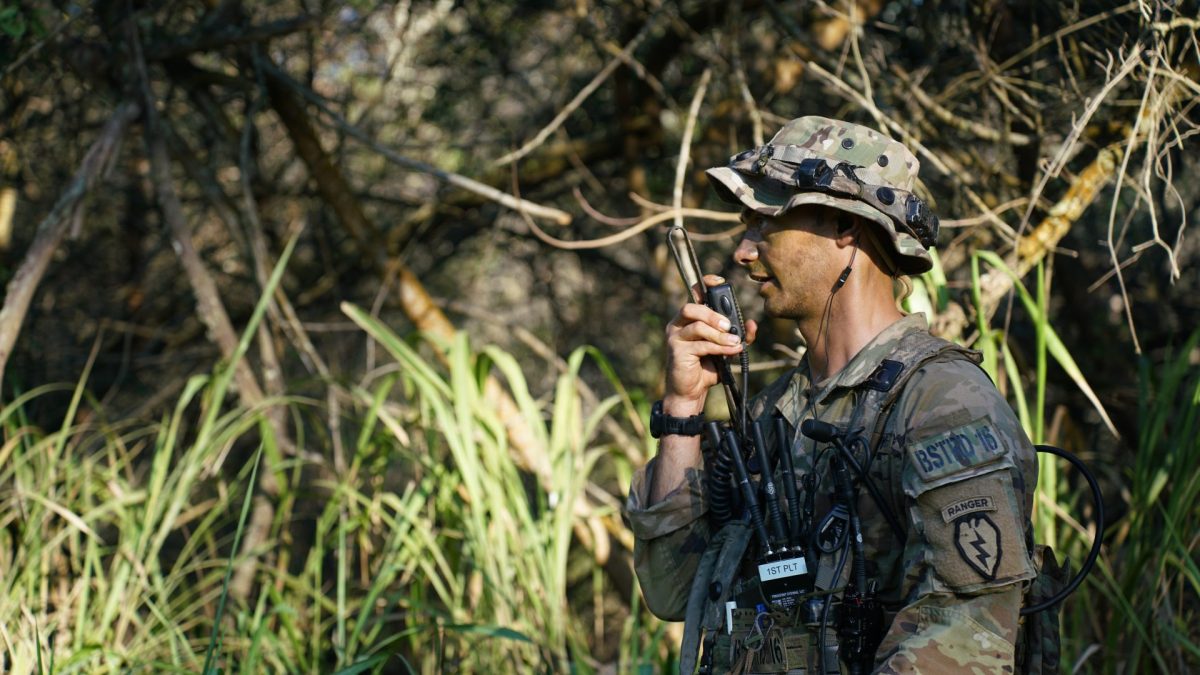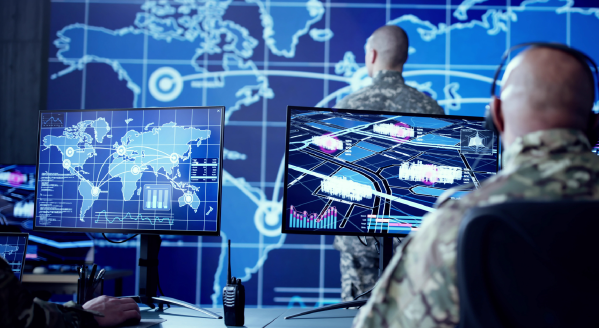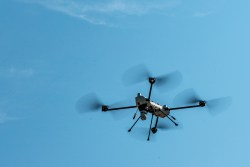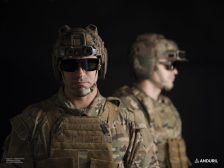New Army sensing CFT to focus on getting intelligence to tactical edge

The Army’s new cross-functional team for “all-domain sensing” will be looking at ways to fuse what was historically exquisite intelligence systems to the edge at the point of need to increase the speed of decision-making.
As the U.S. military is preparing for potential battles with sophisticated nation-states, the way in which wars will be carried out is expected to be much different than past conflicts. Units will be dispersed across vast distances and the forces that act the fastest will be successful.
“We will be operating disaggregated and dispersed in the next fight. One hundred percent true. The speed and that fight will be the difference in whether we win or lose. Whether our nation is going to win or lose the next war will be about how quick we can action targets. We got to close this kill chains fast,” Andrew Evans, director of the intelligence, surveillance and reconnaissance task force, said during a presentation at the Global Force Symposium in Huntsville, Alabama, Wednesday. “To do that we have to understand the ecosystem in which we’re operating and we have to find ways to connect distributed sensors quickly at the classification level that a warfighter needs — not an intel professional maybe, but a warfighter.”
Evans noted how traditionally, the concept of sensing has been intelligence focused, meaning the military and intelligence community built exquisite systems and collection mechanisms that mostly served the IC, which operates at higher classification levels and different authorities than average warfighters.
In the future, this intel must be readily available to troops at the tactical edge to be able to act upon conditions to thwart adversary activities.
“If you’re a warfighter you would say, ‘I’m sure we have great things, I just don’t get it. Right. I don’t get it at my level.’ As we talked about what it means to be ready to fight a war in the next fight, we got to move past that. Sensing for multi-domain operations, I think, is going to look different,” Evans said.
The Army, through the new cross-functional team — which was announced this week — and the deputy chief of staff for intelligence will have to hold the IC accountable to ensure tactical requirements are being addressed.
“One example is if you leave it up to the way it might exist today, an IC partner might deliver data down to a reasonable place on the ground that might not be good enough for the Army. The Army needs that data to be moved to the last tactical mile, if you will,” Evans told reporters. “This CFT in conjunction with the G2 will engage the IC often to ensure that tactical needs of the Army are being addressed, because this is again about warfighting … But we’ve got to keep the focus on tactical warfighting needs.”
He said the Army is already seeing a demand for so-called sensor-to-shooter activity tapping into data below the top secret level, and in some cases, the unclassified level.
“How do we make that shift to more traditional reconnaissance, surveillance and target acquisition?” he asked.
One way to do that at speed is thinking differently about what a sensor is, including what Evans called non-traditional sensors.
“Most of our major combat systems today either are, or will be, built on digital backbones, which means they are running on thousands of micro services and micro sensors. We got to find a way to connect all that because those are sensors across the battlefield,” he said. “Those are not your big, exquisite, expensive intel sensors of old. These are sensors that help us optimize combat systems. Why can’t they help us optimize the way we sense in distributed ways?”
A perfect example is radar warning receivers on helicopters that help pilots survive by looking for enemy radar. At its core, these receivers are signals intelligence systems, Evans said, adding that the Army will begin to connect those types of capabilities to a larger architecture to make that data more available and actionable to forces in the fight.
The first line of effort for the new CFT calls for multi-sensor “dominance,” which deals with prioritizing, integrating and shaping sensor technologies.
“We have sensors or things that can sense all over the battlefield today. We have capabilities, we have all kinds of different things that sense,” Michael Monteleone, director of the cross-functional team, told reporters — noting that journalists’ phones, not traditionally thought of as sensors, are now sensors being used to record his remarks. “We may not be taking as much advantage as we could of all the sensing capabilities that we have out there today. Which means not only just hey, we can capitalize on that, but also in some cases we don’t always have to build something either. Sometimes having three of something of less fidelity is just as good as having one of very high fidelity and very high cost.”
Another major shift the Army is gearing up for is in the processing, exploitation and dissemination of intelligence information, or PED.
With more and more sensors being delivered to the battlefield, PED will become more daunting. However, the answer to the problem should not be more people, but rather, artificial intelligence and machine learning to help make sense of what is and isn’t important, officials have suggested.
“You know what a lot of are really, really smart analysts would do? They’d spent an entire shift reporting, ‘Sir, there was nothing significant to report.’ An entire shift. We cannot do that in the future,” Evans said. “We have to take our humans and we have to apply judgment and discretion to whatever the machine presents to them for evaluation. A machine should tell you there was nothing important to look at, but these few things you really need to go take a look at. Then the human should look at those few things. That’s how you keep up with data in the next fight.”
Evans said when building new capabilities, the Army should start by asking what AI or ML needs to be developed to optimize them, which will ultimately better optimize the human enterprise.
“When we combine the data literacy training that will be needed for our humans with this, what I’ll call an intel version of human-machine integration, we will generate exponential enhancements in the speed of decision-making and that will allow us to match the tempo of a data-driven” operation, he said.
The Army will also need to develop stronger edge computing capabilities to enable this type of intelligence and PED to process back and forth from static, remote hubs to soldiers on the ground.
“Edge compute has got to be a piece of that. We think that bandwidth will be limited and contested, certainly,” Evans said. “We have to figure out how [to] operate in those environments. And that’s going to involve doing as much of your compute forward as you can, as much of your processing of the sensor as you can and bringing back the relevant data.”






